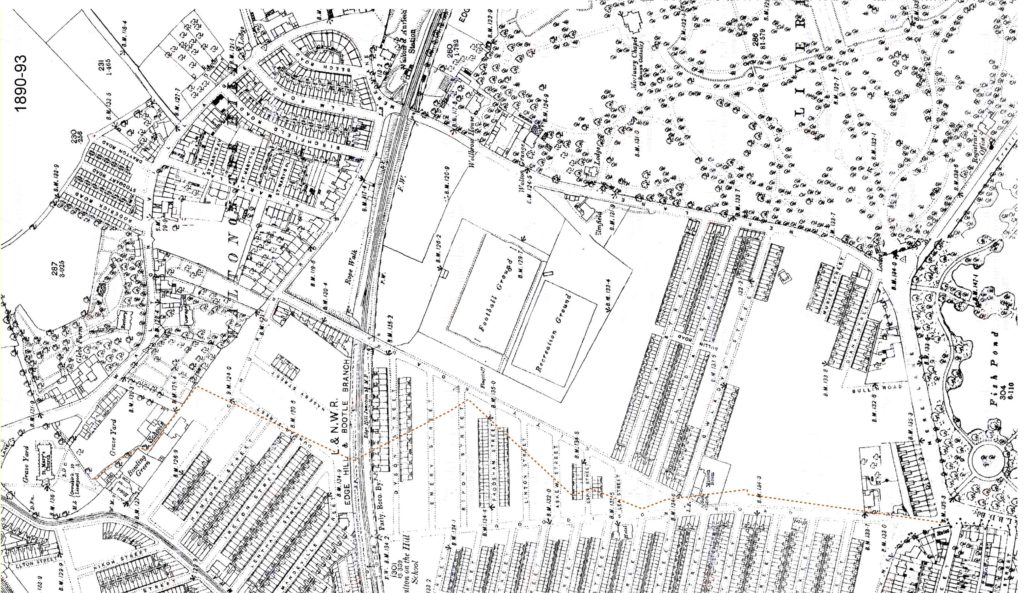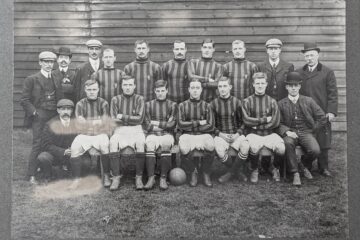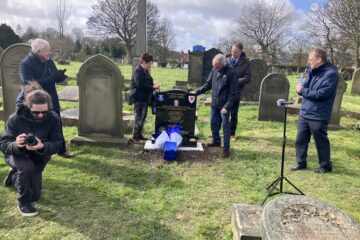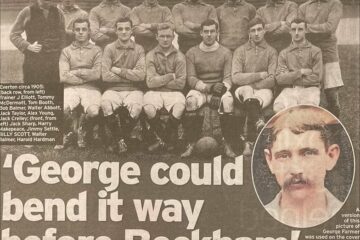Most of the Scotsmen who played for Everton during their inaugural Football League season made their way to Liverpool having been recommended by agents who acted for the Anfield club north of the border. Walter Brown, however, appears to have arrived in the Mersey seaport with no knowledge whatsoever of the association game.
He was born 11 June 1870 in the remote Kirkcudbrightshire community of Colvend, and was one of several children born to Thomas, a tinsmith, and his partner, Agnes. The 1881 census found the family still living in Kirkcudbrightshire before Agnes, on becoming a widow, moved with her three sons to live with her married daughter, Jane, at 6 Parkinson Road in Walton on the Hill. However, she did not remain at this address for very long, and soon took up residence at 9 Imrie Street off Breeze Hill.
The association game did not reach the south west of Scotland until 1892, so Wally Brown must have learned his football on Merseyside and joined Stanley Football Club with his elder brother, Thomas. He first encountered the Everton club 21 January 1888 when they visited Stanley’s enclosed ground at Walton Stiles. The Anfield club were struggling to field a side having just recommenced playing football following a suspension, issued by the game’s governing body, for paying imported players from Scotland. The game attracted a large crowd – estimated at 4,000 – to the simple enclosure where they proved difficult to control. Wally Brown lined up alongside Archie Goodall, a promising young player who had joined Stanley having previously played football in Kilmarnock.

Everton suffered an early setback when their centre-half Robert Jones was injured and had to leave the field for the duration of the game. George Dobson reorganised his defenders, but Wally Brown found an opening to give the home side a lead at the interval. Everton continued to battle against the odds but, as they tired towards the end of the game, Stanley added further goals to win 3-0.

The Brown brothers continued to appear in the Stanley side, but young Walter was now earning himself a reputation for his rough and over-enthusiastic style of play. This fact was highlighted 21 April 1888 when Stanley met Bootle in the final of the Liverpool & District Cup at the new ground of the Liverpool Athletic Club on Prescot Road. The game was covered by an experienced journalist from the Football Field who described the location as being ‘short, uneven and vilely turfed while the ball provided was of inferior quality and, once coated with mud, it became like a huge pudding.’
The game was played in wet and windy conditions and it was watched by a crowd of 500 people. Bootle won the game 3-0 with Wally Brown being ordered from the field by the referee Mr JJ Bentley of Bolton. The visiting journalist further commented that:
Stanley showed a very offensive spirit throughout the game and the dismissal of W Brown at some period had been long inevitable. After the match I spoke with two Gentlemen – whose connection with the Stanley club has been long and honourable – and they appeared to be greatly cut up. One of them bitterly exclaimed, “Brown must attach himself to a club with more friends; his vices will then become virtues.”
Football Field, April 1888
The next season Wally Brown was signed by Everton. The Scotsman must have been a free agent when he joined the Anfield club because the minute book – taken 4 October 1888 – informs us that ‘W Brown be engaged at a wage of £1 per week subject to being re-instated with the Liverpool & District FA.’

The teenager was thrust straight into an Everton forward line that was changing week by week. He made his Football League debut 3 November, playing on the left wing, and scored in a 2-1 win over Bolton Wanderers at Anfield. He then took part in a 3-0 defeat, on the Leamington Ground by Blackburn Rovers, which in turn was followed by a 2-2 draw with Burnley at Turf Moor. Walter Brown was then placed in the reserve team pool of players until 22 December, when he was tried at centre-forward in the game at Preston North End.
The Deepdale club were running away with the league, so the game was never going to be an easy outing for the young Scot. The home supporters gave a warm welcome to the Everton goalkeeper Robert Smalley, who was returning to his former club, and then cheered their favourites on to a decisive 3-0 win. The following week, Wally Brown made his fifth Football League appearance for Everton at Accrington.
The venue was the Thornyholme Cricket Ground. The visiting side arrived with just ten men and had to recruit the services of local amateur player Henry Parkinson. Wally Brown gave Everton a first-half lead but once again they faded and eventually succumbed to a 3-1 defeat. The Scottish teenager then returned to the Reserve XI, where he was accompanied on the odd occasion by his brother Robert and played his final Football League game on 9 February, against Wolverhampton Wanderers at Anfield.
Walter Brown remained on the playing staff and made his final appearance on 15 April, in a club fixture against a Newton Heath side who were making their first appearance at Anfield. Everton won the game 3-1. He then appeared to leave the game to concentrate on his business interests.
On 25 August 1895, Walter Brown married Mary Jane Walker at the parish church of St Mary and by 1901 the couple were living in their own double-fronted grocery business at 126 -128 Stanley Road in Liverpool.
By the time of the 1911 census Walter, now in partnership with his brother Robert, had prospered and owned several outlets in Liverpool. He was residing, along with his wife and five children, at 25 Queens Drive in Walton and was employing two servants.
The following year Mary Jane sadly died, but Walter continued to run his business aided by the younger members of his family.
[It is difficult to ascertain what eventually became of him, but a man closely fitting his description was living at 21 Windsor Road in Torquay when he was admitted to Torbay Hospital where he died 8 April 1926].





